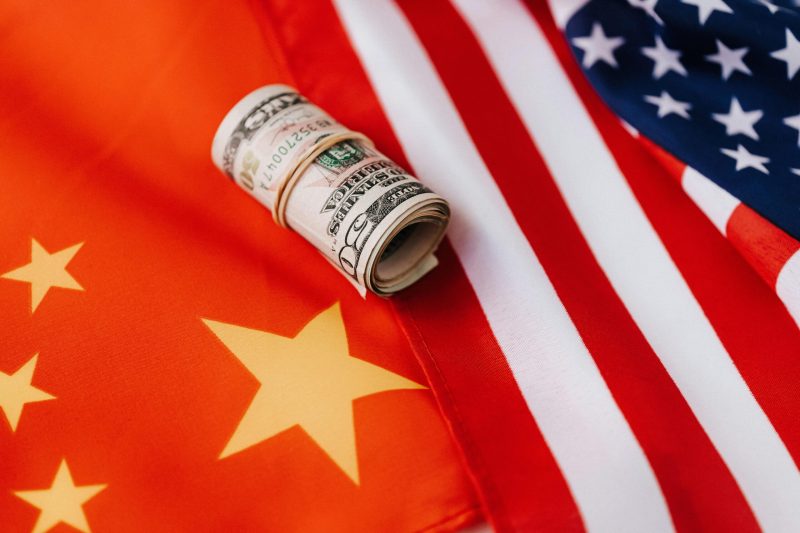China’s top leaders are making their most aggressive push in years to reignite economic growth.
With slowing consumer demand, deflationary trends, and potential trade tariffs by the US, the country’s policymakers are pivoting sharply.
At a recent Politburo meeting, they announced a shift to “moderately loose” monetary policy and more proactive fiscal measures for 2025.
Markets reacted with optimism, but the real test lies in execution.
What does ‘moderately loose’ mean?
China’s decision to adopt a “moderately loose” monetary policy means it is now departing from its 14-year “prudent” stance.
Analysts interpret this as a move toward lower interest rates and reduced reserve requirements for banks.
This would free up liquidity and encourage lending in order to spur economic expansion.
The last time China used this strategy was during the 2008 financial crisis.
While authorities are determined to avoid excessive debt accumulation, the urgency to meet a 5% growth target for 2025 has pushed them toward aggressive measures.
In November alone, the People’s Bank of China injected 1 trillion yuan ($140 billion) into the financial system.
However, the bigger question here is whether these actions will stimulate real economic activity or simply stabilize sentiment.
Fiscal spending ramps up
Fiscal policy will also take center stage in 2025, with promises of “more proactive” measures.
This could include increasing the fiscal deficit beyond its current 3%, allowing the government to fund major infrastructure projects and stabilize struggling sectors.
Analysts predict significant bond issuance and new initiatives targeting regional economies.
Recent measures, such as a $1.4 trillion debt relief package for local governments, highlight the scale of the fiscal response.
Subsidies for consumer goods like home appliances and cars have shown some short-term success, but broader fiscal spending is needed to drive sustainable growth.
Expanding these subsidies and implementing direct financial support for low-income households may be on the horizon.
Consumer demand: the missing piece
Despite the policy shifts, consumer demand remains a weak link.
Retail sales saw a slight boost in October thanks to a holiday period, but November data showed no sustained improvement.
In fact, consumer prices rose by only 0.2% year-on-year—the lowest since June—and producer prices declined for the 26th consecutive month.
Premier Li Qiang has emphasized the importance of “forcefully lifting consumption,” with unconventional measures likely to follow.
Programs like cash-for-clunkers, which offer discounts on new purchases in exchange for old products, could expand in 2025.
However, these measures may only offer temporary relief unless deeper structural issues, such as stagnant wages and a struggling property market, are addressed.
Trade tensions escalate
China’s export-driven growth faces new risks as Donald Trump prepares to return to the US presidency.
His proposed tariffs of up to 60% on Chinese goods could significantly disrupt trade flows.
Although exports to the US increased 8% year-on-year in November, analysts believe this growth reflects US firms front-loading orders ahead of expected tariffs. A slowdown in the latter half of 2025 is anticipated.
Other trade partners, such as ASEAN and the European Union, have shown resilience, with export growth of nearly 15% and 7.2%, respectively.
However, imports from these regions have declined, underscoring weak domestic demand.
China’s export strength in sectors like renewable energy, steel, and rare earth minerals remains a bright spot but does little to address internal economic challenges.
The property market dilemma
China’s property market continues to weigh heavily on the economy.
Falling home prices and reduced investment activity have eroded consumer wealth and confidence.
Policymakers have pledged to stabilize the sector, but tangible improvements have been slow to materialize.
The property market’s decline has broader implications for economic recovery.
A rebound in this sector could significantly boost consumer spending and investment, but achieving that will require more aggressive and targeted policies.
Without a turnaround, domestic demand may remain stagnant, undermining broader recovery efforts.
Market’s reaction and the road ahead
Financial markets reacted positively to the Politburo’s announcements, with the Hang Seng Index rising over 3% and Chinese stocks seeing gains.
Economists are particularly concerned about the implementation timeline.
While rate cuts and fiscal measures have been signaled, the actual rollout may take months.
Policymakers will also need to balance short-term gains with long-term stability, ensuring that debt levels remain manageable.
The Central Economic Work Conference is set to begin this week, which will outline specific growth targets and policy details for 2025.
While recent announcements reflect a strong commitment to change, their success depends on swift and effective implementation.
China’s ability to hit its 5% growth target hinges on boosting domestic consumption, stabilizing key sectors like property, and mitigating the impact of global trade tensions.
The coming months will reveal whether these policies can deliver meaningful results or if more drastic measures will be needed.
The post The truth about China’s stimulus: a promising change or just a big gamble? appeared first on Invezz


